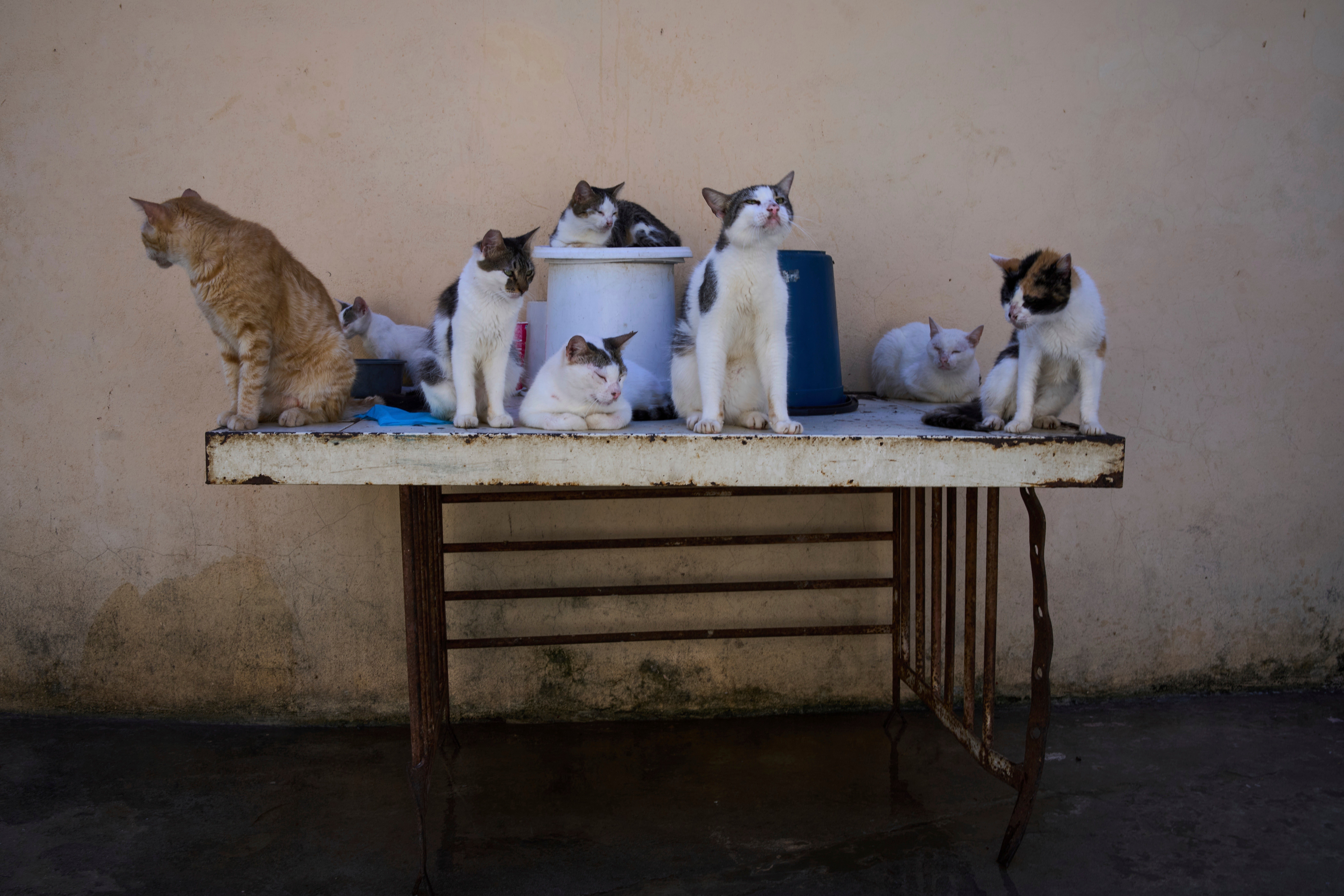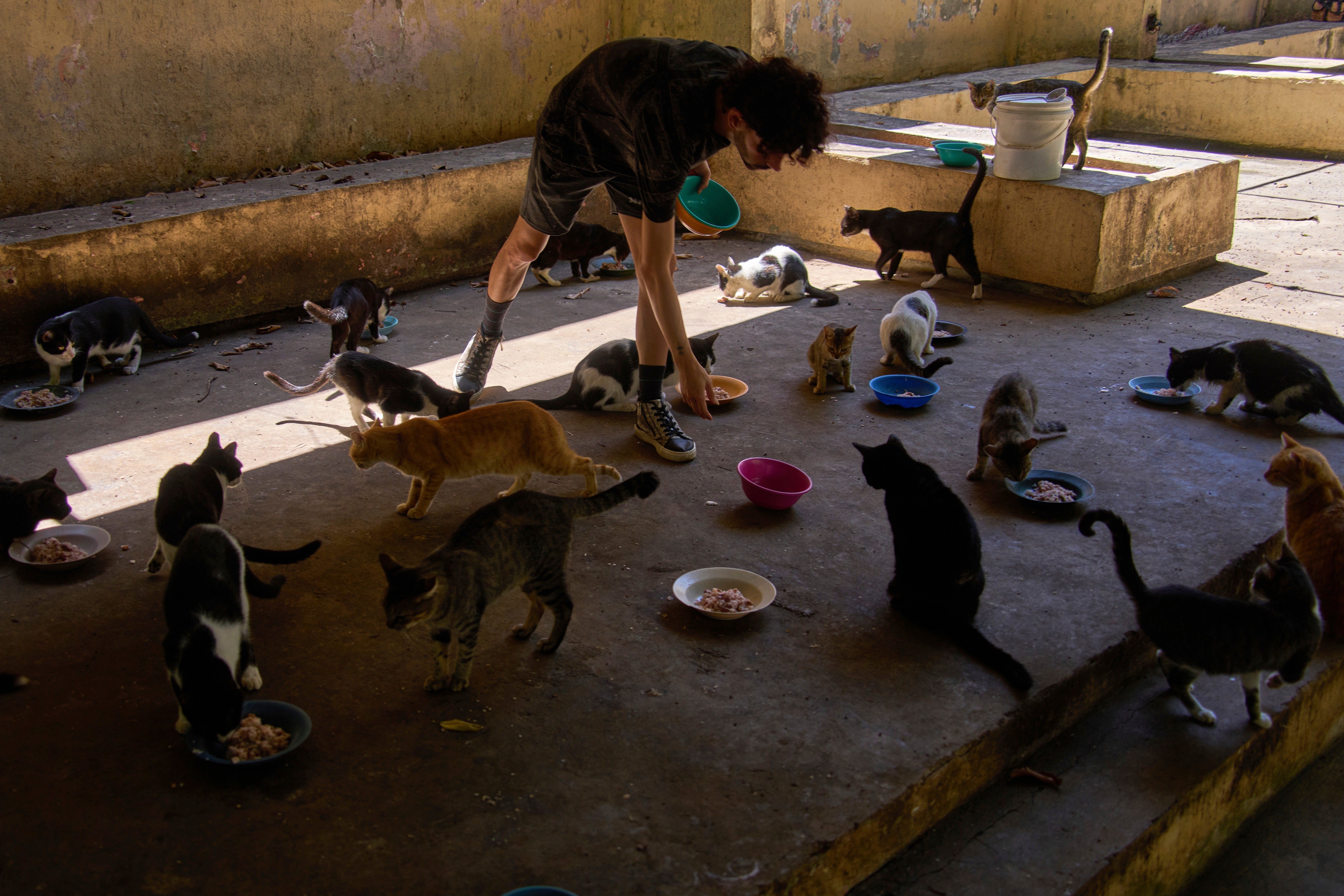Cats and abandoned dogs at a tourist hot point with the worsening economic crisis
Every day, 81 -year -old Nelida Perez feeds hungry cats in the streets of the cobbler. HavanaOne of the most popular tourist sites in Cubic capital.
She once relied on her food donations or restaurants, but with the aggravation of the island’s economic situation and tourism, it has become increasingly difficult to provide.
Since 2020, Cuba She faced a deteriorating, paid economic crisis Corona virus disease-19 closure, US sanctions are more strict, and internal monetary reform that caused inflation.
“I haven’t asked anyone from anyone from anyone to feed the cats,” Perez said.
“Now I see myself in difficulties because there is no tourism and there is an economic crisis.”

Although the government provides vaccines, sterilization and some free clinics, it does not contain a way to provide shelter and food for cats and dogs in the streets. While official data is not available, activists say that many pet fans have turned their homes – even small apartments – into shelters, but they are struggling to keep pace with the demand and provide appropriate care.
“The streets will kill them,” said Parbora Iglesias, 51 -year -old pharmacist who adopted five dogs and found homes for dozens of others. Iglesias explained that the most difficult part is to get food.
The bag of 20 kg (44 rugs) costs dog food, which lasts one dog for 45 days, about $ 80-which is far from everyone’s reach. This forces people to feed the animals with pork (unwanted) or chicken parts or minced meat – which is not easy to obtain as well.
Moreover, the annual vaccines cost about 20 dollars and visit a veterinarian of another $ 10, while the average monthly salary on the island is about $ 12.
Experts say that the abandonment of animals in Cuba is the result of several factors, including high food and medicine prices, the migration of hundreds of thousands of Cubans in the past five years, and a high mortality rate among the elderly.

“People focus more on their problems, and they are many: Cubans have no water, and they have no electricity, and getting food is increasingly difficult,” said Anili Gonzalez, one of the leaders of the Aldameros project, a cat colony in a garden at the Havana historic center.
“The presence of an animal in your care involves nutrition and care.”
She and a small group of volunteers began to feed 15 cats in Aldameros Park at the beginning of the epidemic.
Today, they are interested in more than 150. Over the years, through their own efforts and some donations, they managed to install water and pens for special cases and cages for cats.
Gonzalez refers to a number that she said was the detection of the shocking scale of the problem: at the beginning of the contract, nearly three abandoned cats appeared in the garden every week. This year, this number rose to 15 a day.
Once again in the Old Havana, Perez is saddened by how people saw the treatment, beating, and even killing stray cats.
“As long as I am alive and healthy, people help me,” I pledged, “I will always find them something to eat.”












Post Comment